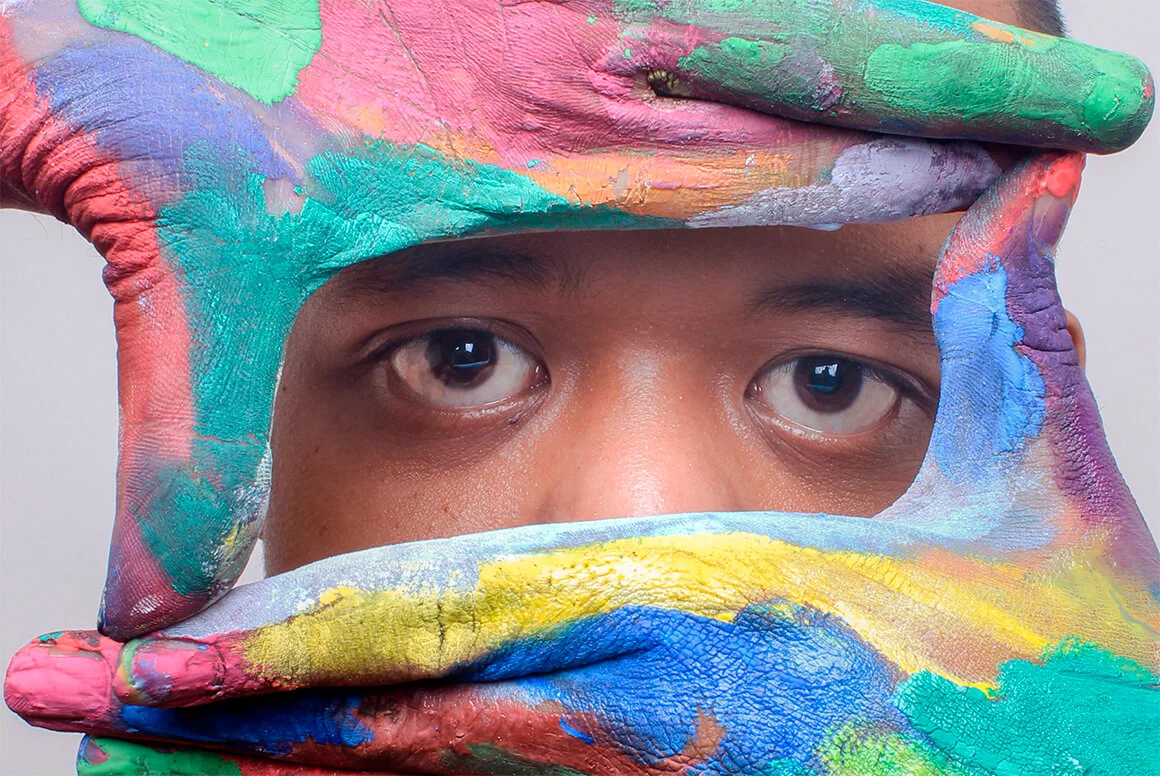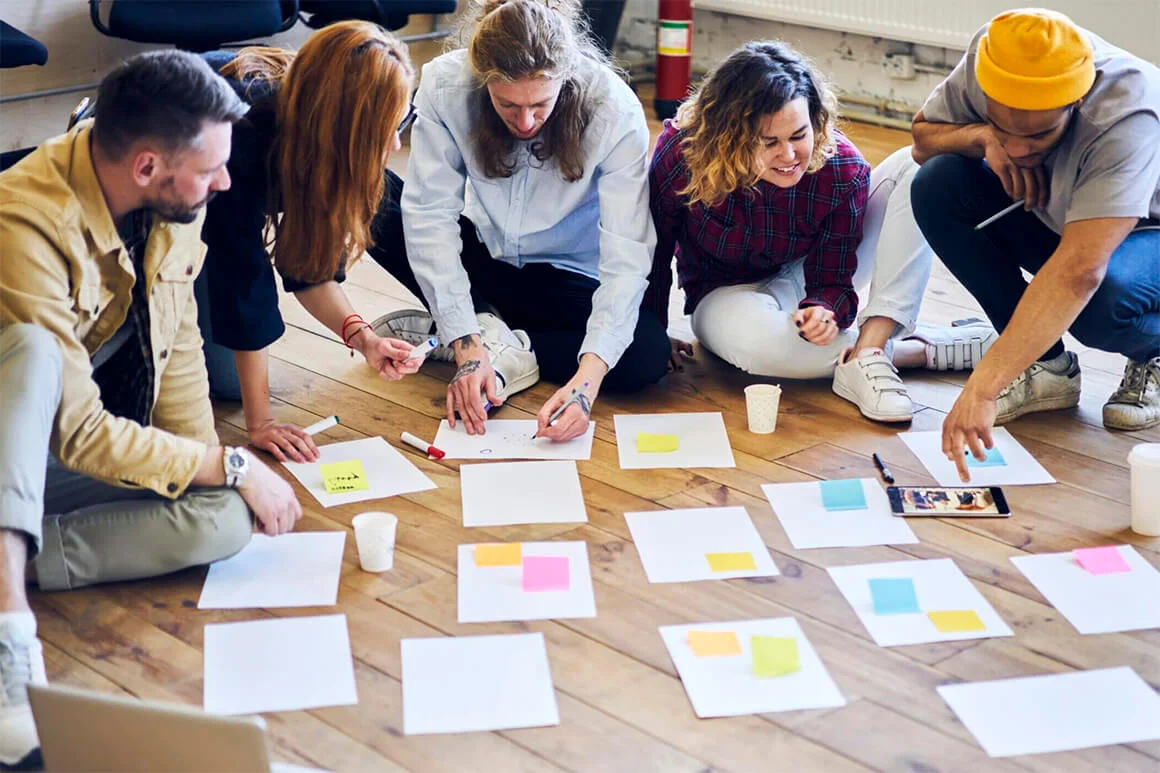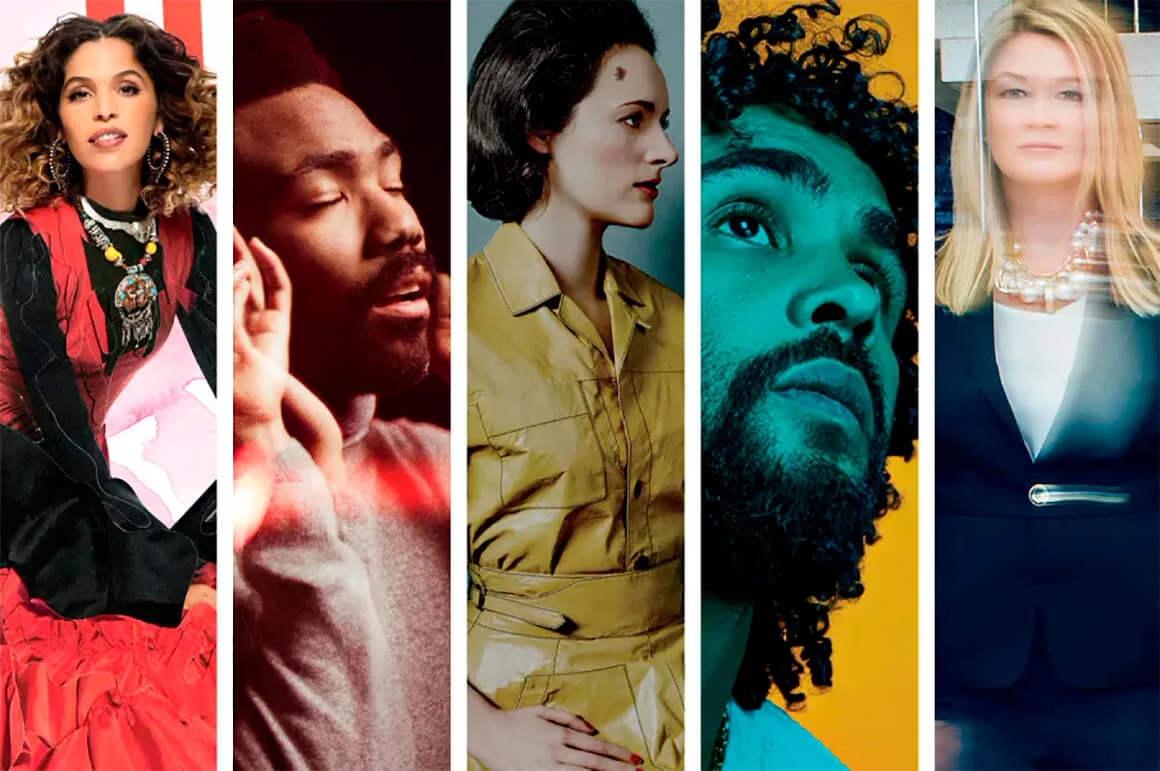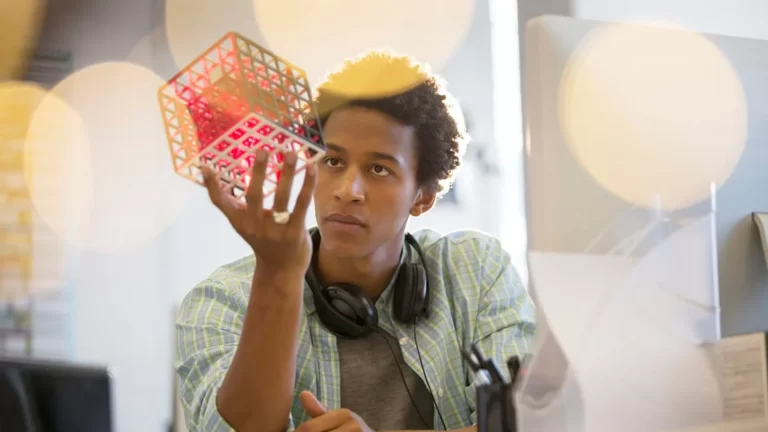A creative person is an individual who possesses the ability to innovate, generate new ideas, and create original products. These individuals are often able to view the world from unique perspectives and implement fresh and promising solutions across various fields.
What personality traits does a creative person have? Typically, such a person is full of enthusiasm, energy, and a desire to bring their ideas to life. They also exhibit flexible thinking, the ability to see connections between unrelated things, and persistence in overcoming difficulties and obstacles.
It is important to note that creativity is not limited to the arts. Creative individuals can be found in many fields, including science, technology, business, education, and more. It is also worth considering that creativity can manifest differently in various contexts and cultures.

The Role of Creativity in Personal Development
The role of creativity in personal development is significant. Here are several key examples:
- Development of critical thinking. Creativity stimulates individual critical thinking, helping to see things from different perspectives, analyze, and evaluate situations and problems.
- Self-expression. Creative activities provide individuals with an opportunity to express their emotions, ideas, and experiences. This serves as a healthy way to process and make sense of feelings.
- Problem-solving. Creativity helps develop problem-solving skills by requiring the generation of new and innovative ideas.
- Self-esteem. The creative process helps individuals learn more about themselves, their preferences, desires, and capabilities.
- Social skills. Collaborative creative activities help develop communication skills, teamwork abilities, empathy, listening skills, and recognition of others’ ideas.
- Resilience. Creativity often involves trial and error, which contributes to the development of perseverance and resilience in the face of failure and challenges.

What Personality Traits does a Creative Person Have?
A creative personality typically possesses a number of unique traits. One key characteristic is openness to experimentation. Creative individuals seek new ideas and concepts, exhibit flexible thinking, and curiosity, which drive them towards continual self-improvement and learning.
Additionally, creative personalities often display a high degree of perseverance. Overcoming challenges, resilience, and the ability to persist in their work, even when outcomes are unclear, are important aspects of their creative character. Such individuals are typically independent and confident, allowing them to pursue their unique ideas and inspirations despite societal norms and expectations.
Openness to new experiences and creativity
Openness to new things and creativity are two important character traits that are often found in creative people.
- Openness to new experiences involves a readiness to acknowledge and explore new ideas, practices, or perspectives. This trait is often associated with curiosity, a desire for learning, and personal growth. Open individuals often seek diversity in their experiences and beliefs. They are more inclined to experiment and explore, unafraid of the unknown, and are often at the forefront of innovation and change.
- Creativity, or the ability to generate new and original ideas, is also a key element of a creative personality. Creative individuals can transform existing concepts into new and interesting forms. They can find unusual or innovative solutions to problems and tasks, often characterized by a high degree of inventiveness and originality in their work and thinking.
Independence and originality of thought
Independence and originality of thinking are two more key traits of a creative personality.
- Independence is related to the ability to make decisions and act independently, without excessive reliance on the opinions or approval of others. Creative individuals are often willing to go against the grain, even when their ideas or approaches diverge from accepted norms. This trait also involves standing by their ideas and creative products, despite potential obstacles or criticism.
- Originality of thought involves the ability to think outside established frameworks, proposing new and unique ideas or solutions. Original thinkers often excel at seeing connections between things that may appear unrelated, and their thinking is often characterized by non-linearity and metaphorical reasoning. They do not simply accept things as they are but constantly seek new and improved ways to do things.
Risk-taking and readiness for failure
Risk-taking and willingness to fail are two other essential character traits of a creative person.
- Risk-taking here can encompass everything from minor risks, such as trying a new approach at work, to major risks, such as making a significant career or lifestyle change in pursuit of creative expression. Creative personalities are often willing to take risks because it is often at the edges of the unknown and uncertain that the brightest ideas are born.
- Readiness for failure is also a key trait of a creative personality. The creative process often involves a series of failures and mistakes before success is achieved. Creative individuals understand that failure is not the end but a part of the learning and growth process. They are not afraid to make mistakes and learn from them to become better. This resilience and ability to bounce back from failure are important components of the creative process.
High motivation and determination
High motivation and determination are two more important character traits of creative individuals.
- High motivation often stems from their passion or love for their work and can be a strong driver of their activities and efforts. Creative personalities are usually highly motivated, especially when it comes to their creative work. They feel a strong internal desire to create, explore, renew, or transform.
- Determination is also a common trait of creative personalities. Creative individuals often have a clear idea of what they want to achieve and are willing to work hard to reach their goals. This may mean diligently working on a project for many years or striving for excellence in their art or craft. Determination also helps them overcome obstacles and failures as they continue to move forward toward their goals.
Flexibility and adaptability
Flexibility and adaptability are two more important character traits of a creative person.
- Flexibility involves the ability to change and adapt to new circumstances. Creative people often have more flexible thinking, allowing them to see things and situations from various perspectives and seek new and unique solutions. They can quickly switch between different tasks, ideas, or approaches and are willing to change their plan or strategy if circumstances change.
- Adaptability is the ability to quickly and effectively adjust to new or changing conditions. Creative personalities possess this ability because their work and ideas are often subject to changes and uncertainties. They can react to deviations, changes, or obstacles quickly and can quickly find new approaches or solutions when old ones do not work.
Ability to deeply focus and immerse in the process
The ability to deeply focus and immerse in the process is a key characteristic of the creative personality.
Creative individuals have a unique ability to deeply immerse themselves in their work to the point where they may lose track of time and the surrounding world. This state, known as “flow,” is often associated with creativity and can lead to significant improvements in productivity and quality of work.
Such deep immersion also allows creative individuals to meticulously explore ideas, sift through various options, and experiment with different approaches until they find what works. This intrinsic aspect of the creative process often leads to the emergence of original and innovative ideas and solutions.
Intuition and emotional sensitivity
Intuition and emotional sensitivity are two more significant traits of a creative personality.
- Intuition, the ability to understand or know something without conscious reasoning, plays a crucial role in the creative process. Creative individuals often rely on their intuition when creating new ideas or solutions, especially when faced with complex or multifaceted problems. Their intuitive senses can guide the creative process and help penetrate to the heart of matters.
- Emotional sensitivity, or the ability to deeply and intensely experience emotions, is also a common trait of creative personalities. They often react strongly to emotional stimuli and can use their emotions as a source of inspiration or creative material. This also helps them better understand and express the human experience in their work.

Difference between Creative and Non-Creative Personalities
Creative personalities possess a unique set of character traits that contribute to their ability to innovate, explore, and create new things. They are often open to new ideas and experiences, exhibit creativity, originality of thought, and a willingness to take risks.
Creative individuals also demonstrate flexibility of thinking, the ability to deeply immerse themselves in their work, and apply intuition in their creative process. They often have high emotional sensitivity, which serves as a source of inspiration for them.
On the other hand, non-creative personalities are less open to new experiences, less inclined to take risks, and have a more limited approach to problem-solving. They prefer to follow established norms and procedures rather than seeking new and innovative approaches.
Non-creative individuals are less likely to deeply immerse themselves in their work and rarely rely on intuition in decision-making processes. They are also less emotional and sensitive, which limits their ability to deeply understand and express emotions through creative activities.

How Traits of a Creative Personality Influence Behavior and Interaction with the World
The characteristics of a creative personality can have a significant impact on their behavior and interaction with the world.
- Openness to new ideas and experiences often drives creative individuals to seek new opportunities and perspectives, as well as to take more risks and experiment than others. They are more curious in their approach to life.
- Ability to deeply focus and immerse in work allows creative individuals to spend extensive time pursuing their creative endeavors, influencing their social relationships and overall behavior.
- Intuition and emotional sensitivity lead to a deeper understanding and empathy towards others, making creative personalities more responsive and sensitive in their interpersonal relationships.
- Willingness to take risks and accept failures influences their problem-solving approaches and resilience. Creatives are more prepared for failures and can use such experiences as opportunities for learning and growth.
- Flexibility and adaptability help them navigate changes and uncertainties in life, enabling creative personalities to remain resourceful and determined even in complex situations.
- Originality of thought and creativity manifest in their unique perspective on the world and how they interact with it. They can see opportunities where others see obstacles and create new ideas that can make significant contributions to their communities and society at large.

Benefits of Developing Creative Thinking in Everyday Life
Creative thinking is not only important for artists, musicians, or writers; it is beneficial across all aspects of everyday life. Here are several examples:
- Problem-solving: Creative thinking helps us find new and innovative ways to solve problems, especially useful when traditional approaches fail.
- Decision-making: Creative thinking allows us to see more possibilities and options, leading to more thoughtful and effective decision-making.
- Self-expression: Creative thinking provides an opportunity to better express oneself, feelings, and thoughts, improving relationships and enhancing communication with others.
- Personal growth: Creative thinking stimulates curiosity, fosters learning, and promotes personal development, making us more open to new ideas and perspectives.
- Enhancement of professional skills: In many professions, from medicine and engineering to business and education, creative skills are essential for generating new ideas, solving complex problems, and improving processes and systems.
- Improvement of quality of life: Creative thinking helps find joy and satisfaction in everyday life, discovering new ways to enjoy hobbies, art, or nature.
- Stress management: Creative activities such as painting, writing, or music are excellent ways to manage stress and improve emotional well-being.
- Stimulation of cognitive functions: Creative thinking stimulates our brain, enhancing memory, concentration, and attention. This is particularly beneficial in older age, as many creative activities help maintain cognitive health.
- Boosting self-confidence: Engaging in creative activities often involves overcoming obstacles and taking risks, which helps strengthen self-esteem and self-confidence.
- Supporting social connections: Participating in theater groups or attending art classes helps build social connections and maintain relationships with creative individuals.
As you develop your creative thinking, you can utilize these skills to improve your quality of life and achieve personal and professional goals.

How to Support and Develop Creative Traits
Supporting and developing creative traits can be an important task for those looking to enhance their creative abilities or strengthen their creative personality. Here are several ways to achieve this:
- Embrace novelty: Be open to new ideas, perspectives, and experiments. This may involve reading books on various topics, traveling to new places, learning new skills, or interacting with people from different cultures.
- Practice flexibility of thought: Develop the ability to see things from different perspectives and consider various approaches to problem-solving. Solve puzzles, play board games that require strategic thinking, or consciously avoid a “one-sided” approach to problem-solving.
- Learn to manage risks and failures: Creativity often involves risks and potential failures. Try to see failures as opportunities for learning and growth.
- Develop intuition: Learn to listen to and trust your intuitive feelings. This could involve meditation or simply taking time to rest and reflect.
- Fully immerse yourself in your work: Focus on tasks at hand. Set specific time frames for working on projects, minimize distractions, or establish a “ritual” before engaging in creative activities.
- Maintain emotional sensitivity: Learn to recognize and express your emotions, as well as be attentive to the emotions of others. This may involve developing empathy or working on communication skills to effectively convey your feelings and understand others’ emotions.
- Take care of your physical and mental health: Creativity requires energy and resilience. Proper nutrition, regular physical activity, and adequate sleep help maintain overall health, which in turn supports creative thinking.
- Allocate time for self-reflection: Gain a better understanding of your interests, as well as your strengths and weaknesses. This will help identify which aspects of your creative character require further development.
- Surround yourself with creative people: Your environment plays a crucial role in supporting and developing your creative character. Seek to spend more time with people who inspire, stimulate, and support your creative efforts.
- Practice regularly: Like any skill, creativity improves with practice. Be prepared to regularly dedicate time to creative activities to strengthen and develop your creative abilities.

Prospects for Further Research in the Psychology of Creativity
Scientific understanding of creative personalities continues to evolve, offering numerous opportunities for psychologists to explore further in this field. Some directions could include:
- Studying differences between creative disciplines: How does the creative personality of an artist differ from that of a scientist or entrepreneur? Conducting such research will help us better understand how different types of creativity relate to various personality traits.
- Exploring the influence of environment on creative personality: To what extent does the environment, such as culture or education, influence the formation of a creative personality? This can enhance our understanding of the factors that contribute to talent development.
- Expanding methodologies for stimulating creative thinking: Can specific strategies or techniques, such as meditation or particular educational methods, help individuals develop creative skills? Researching these questions could lead to the creation of effective training and development programs.
- Studying the relationship between creative personality and mental health: Are there connections between creative abilities and specific mental states or disorders? This research will help understand how creativity is linked to mental health.
- Exploring the relationship between creative abilities and technologies: How can technologies, including artificial intelligence, influence the creative process? How can creative personalities interact with and utilize these technologies to enhance their creative progress?
These avenues of research hold promise for advancing our understanding of creativity and its implications across various domains.

Famous Examples of Creative Personalities and Their Achievements
Throughout history, there are numerous examples of outstanding creative personalities who have made their mark in various fields such as art, science, literature, and more. Here are a few examples:
- Leonardo da Vinci – One of the most famous creative minds of all time. This Italian artist, scientist, inventor, and polymath is renowned for artworks such as the “Mona Lisa” and “The Last Supper,” as well as his scientific observations and inventions.
- Albert Einstein – A German physicist who developed the theory of relativity, one of the two pillars of modern physics. His creative approach to science and unique thinking led to several breakthroughs in our understanding of the universe.
- Frida Kahlo – A renowned Mexican artist known for her self-portraits depicting her pain, suffering, and elements of Mexican folk culture.
- William Shakespeare – One of the most famous and quoted writers in history, known for his sonnets and plays such as “Romeo and Juliet,” “Hamlet,” “Othello,” “Macbeth,” and many others.
- Steve Jobs – Co-founder and former CEO of Apple Inc. He is known for his creative vision and role in creating a series of groundbreaking products, including the Macintosh, iPod, iPhone, and iPad.
- Marie Curie – A physicist and chemist, twice a Nobel Prize laureate, known for her discoveries in the field of radioactivity.
- Vincent van Gogh – A Dutch artist whose works, such as “Starry Night” and “Sunflowers,” gained wide acclaim for their emotional depth, innovative style, and vibrant colors. Though he received little recognition during his lifetime, he is now considered one of the greatest artists of the 19th century.
- Nikola Tesla – A Serbian-American inventor, engineer, and physicist known for his work in electricity and magnetism. His creative approach and original ideas led to a series of inventions that formed the basis of modern alternative electrical power.
- Pablo Picasso – A Spanish painter and sculptor, one of the founders of Cubism. He created over 20,000 works in his lifetime, including “Les Demoiselles d’Avignon” and “Guernica,” and had a profound influence on 20th-century art.
- J.K. Rowling – A British writer, author of the Harry Potter series. She demonstrated her creative thinking by creating a rich and detailed magical universe that inspired millions of readers worldwide.


